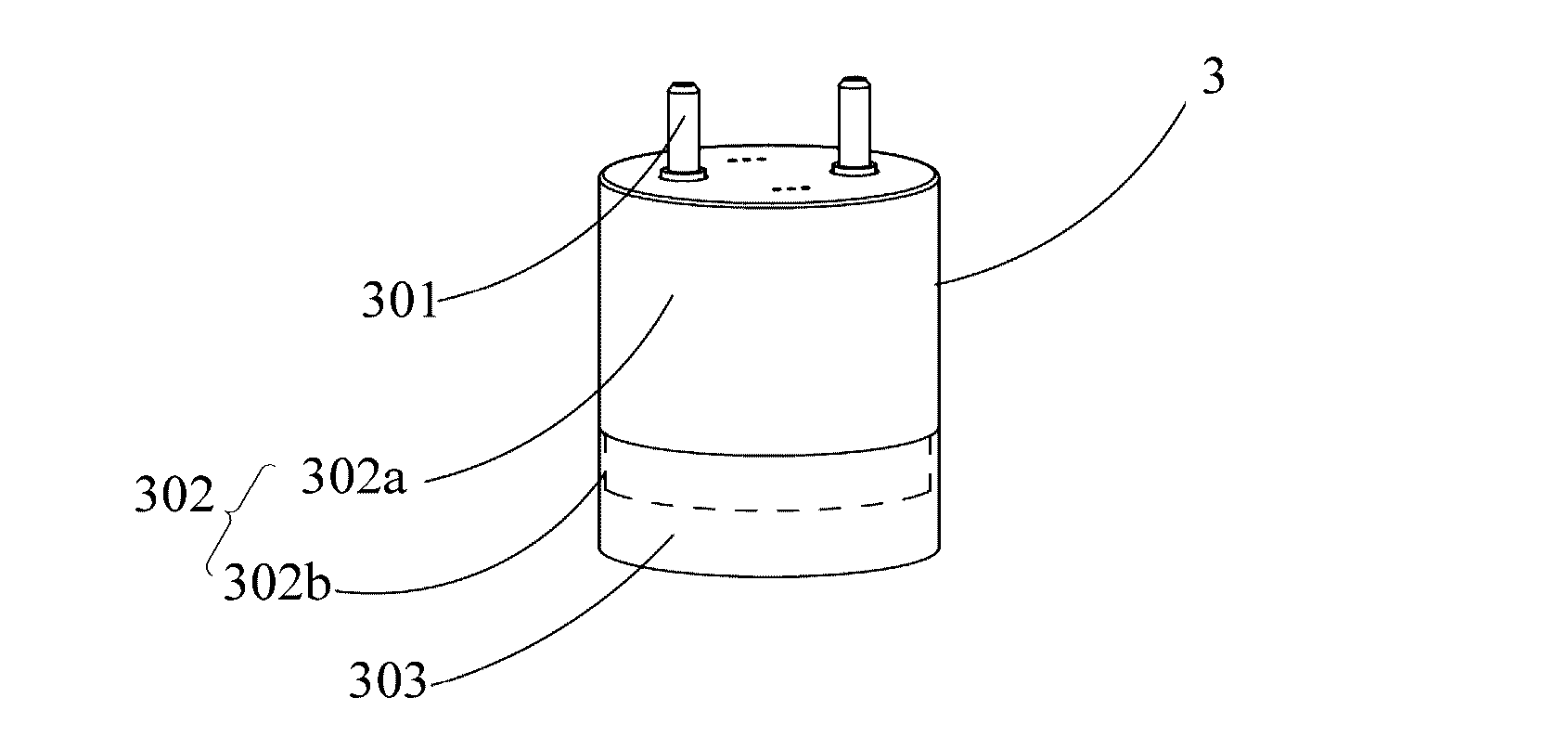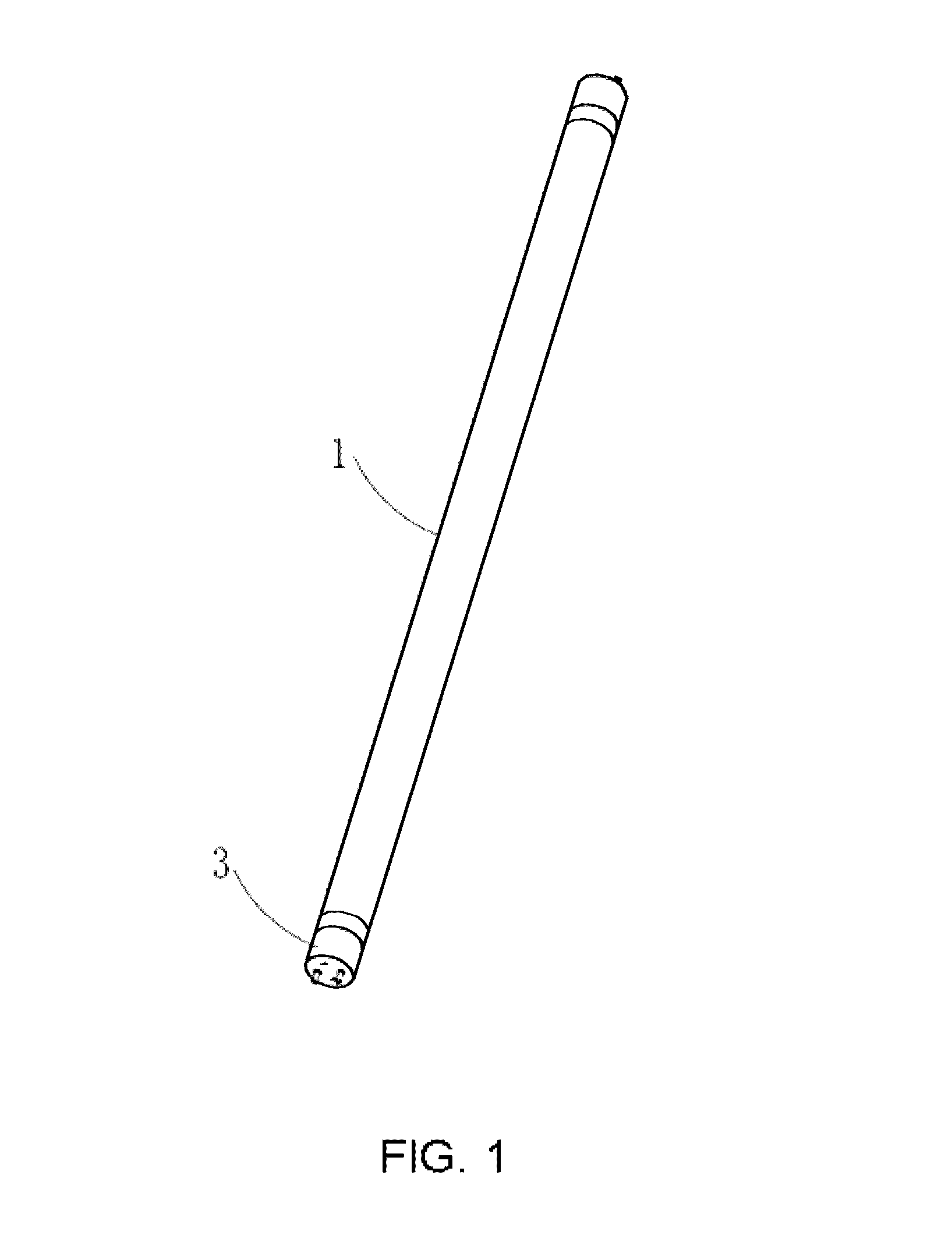End cap of LED tube light with thermal conductive ring
a technology of led tube light and end cap, which is applied in the direction of semiconductor devices for light sources, lighting and heating apparatus, light source combinations, etc., can solve the problems of reducing the luminous efficiency, and reducing the overall lighting or luminous efficiency of the conventional led tube light. , to achieve the effect of less risk of glass light tube breakage and a wider surfa
- Summary
- Abstract
- Description
- Claims
- Application Information
AI Technical Summary
Benefits of technology
Problems solved by technology
Method used
Image
Examples
second embodiment
[0055]The thermal conductive ring 303 can be made of various heat conducting materials, the thermal conductive ring 303 of the present embodiment is a metal sheet, such as aluminum alloy. The thermal conductive ring 303 being tubular or ring shaped is sleeved over the second tubular part 302b. The insulating tubular part 302 may be made of insulating material, but would have low thermal conductivity so as to prevent the heat conduction to reach the power supply components located inside the end cap 3, which then negatively affect performance of the power supply components. In this embodiment, the insulating tubular part 302 is a plastic tube. In other embodiments, the thermal conductive ring 303 may also be formed by a plurality of metal plates arranged along a plurality of second tubular part 302b in either circumferentially-spaced or not circumferentially-spaced arrangement. In other embodiments, the end cap may take on or have other structures. Referring to FIGS. 8-9, the end cap...
first embodiment
[0064]To improve the illumination efficiency of the LED tube light, the light tube 1 has been modified according to present invention by having a diffusion film layer 13 coated and bonded to the inner wall thereof as shown in FIG. 12, so that the light outputted or emitted from the LED light sources 202 is transmitted through the diffusion film layer 13 and then through the light tube 1. The diffusion film layer 13 allows for improved illumination distribution uniformity of the light outputted by the LED light sources 202. The diffusion film layer 13 can be coated onto different locations, such as onto the inner wall or outer wall of the light tube 1 or onto the diffusion coating layer (not shown) at the surface of each LED light source 202, or coated onto a separate membrane cover covering the LED light source 202. The diffusion film layer 13 in the illustrated embodiment of FIG. 12 is a diffusion film that is not in contact with the LED light source 202 (but covering above or over...
PUM
 Login to View More
Login to View More Abstract
Description
Claims
Application Information
 Login to View More
Login to View More - R&D
- Intellectual Property
- Life Sciences
- Materials
- Tech Scout
- Unparalleled Data Quality
- Higher Quality Content
- 60% Fewer Hallucinations
Browse by: Latest US Patents, China's latest patents, Technical Efficacy Thesaurus, Application Domain, Technology Topic, Popular Technical Reports.
© 2025 PatSnap. All rights reserved.Legal|Privacy policy|Modern Slavery Act Transparency Statement|Sitemap|About US| Contact US: help@patsnap.com



